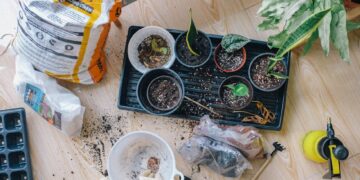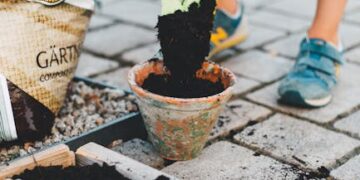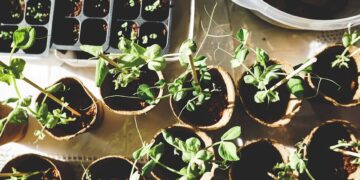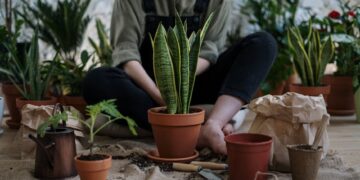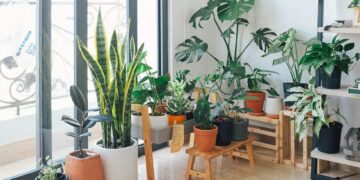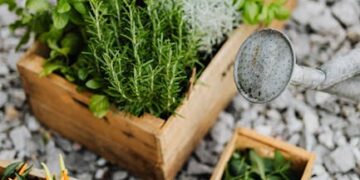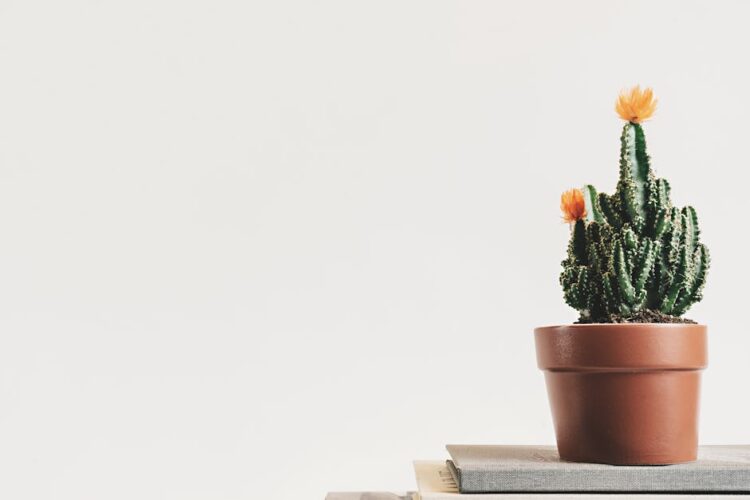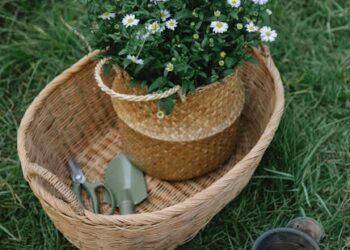Green Thumb Magic: How Plant Care Tips Can Transform Your Home
Introducing plants into your living space can be a transformative experience, benefitting not only the aesthetic of your home but also your well-being. However, the magic truly occurs when proper plant care is applied. Whether you’re an experienced gardener or a newbie to the botanical world, understanding the fundamental care tips can elevate your home’s environment, turning it into a lush, vibrant haven. In this article, we’ll explore essential care tips and demonstrate how they can transform your home into a refreshing and lively space.
Understanding the Basics of Plant Care
Caring for plants is much more than simply watering them. It involves understanding the specific needs of different plant types, their preferred habitat, watering schedules, and much more. Here’s how you can get started:
Choosing the Right Plants
Not all plants will thrive in your home environment. Consider the light, temperature, and humidity of your space. For instance, succulents require lots of sunlight and minimal water, making them perfect for sunny windowsills. In contrast, ferns thrive in moist, shady areas. Selecting the right plants for your environment is the first step towards a thriving indoor garden.
Proper Watering Techniques
Overwatering is a common mistake among beginners. Plants like Aloe Vera, peace lilies, and snake plants require less water and can suffer from too much moisture. Conversely, tropical plants like orchids and philodendrons might need more frequent watering. Understanding the specific water needs of each plant in your collection is crucial.
Importance of Light
Light is food for plants. Each species has unique light requirements which can range from low to direct sunlight. A general rule of thumb is to keep most tropical plants in bright, indirect light, while desert natives like cacti and succulents prefer direct sunlight.
Benefits of Indoor Plants
Plants do more than just beautify your home. They have numerous health and psychological benefits that can significantly enhance your living environment:
Improving Air Quality
Plants like spider plant, bamboo palm, and Boston ferns are known for their ability to purify the air. They absorb toxins and carbon dioxide, releasing clean oxygen, and improving the overall air quality inside your home.
Enhancing Mood and Reducing Stress
Connecting with nature, even indoors, can have a remarkable effect on your mood. The presence of greenery reduces stress, enhances relaxation, and can improve productivity. This is particularly beneficial in settings like home offices or study rooms where focus is paramount.
Fostering Creativity
Several studies have shown that the presence of plants can boost creativity. Natural environments stimulate our brains differently than artificial ones, promoting creative thought through calming influences and sensory stimulation.
Incorporating Plant Care Into Home Design
Infusing your home decor with plant life isn’t just about plopping a potted plant on a windowsill. There are creative ways to integrate plants into your home that maximizes both their aesthetic and health benefits:
Creating a Plant Corner
Dedicate a corner of your living room or study to plants. This can create a mini indoor garden, which can be both a focal point and a personal sanctuary. Use shelves at different heights to add layers and depth with varying sizes and types of plants.
Using Hanging Plants
Hanging plants can save space while adding an element of elegance. Plants like English ivy, pothos, and trailing philodendrons can be hung from ceilings in baskets, providing a fresh, cascading aesthetic to any room.
Kitchen Herb Gardens
For those who love to cook, a kitchen herb garden can be particularly rewarding. Fresh herbs like basil, mint, and cilantro not only bring freshness to your dishes but also add a delightful scent and greenery to your kitchen space.
Common Questions About Plant Care
Let’s address some frequently asked questions to help clarify any uncertainties about indoor gardening:
How often should I repot my plants?
Generally, plants should be repotted every 12 to 18 months, depending on their growth rate and root system. If roots are coming out of the drainage holes or the growth has stunted, it’s time to consider re-potting.
What if my home doesn’t get a lot of natural light?
There are plenty of plants suited for low light conditions. Consider varieties such as ZZ plants, spider plants, and pothos. Additionally, artificial grow lights can supplement the lack of natural sunlight.
What is the best way to check soil moisture?
Instead of guessing if the soil is dry, use a simple tool – your finger. Stick it into the soil up to your first knuckle. If the soil feels dry, it’s time to water your plant.
Conclusion: Cultivating a Green Thumb
Embracing plant care can transform your home into a vibrant, healthy sanctuary. It encourages a deeper connection with nature while enhancing the aesthetic and air quality of your living space. With the right plants and care techniques, you can cultivate a green thumb and enjoy all the benefits that come with it. Happy gardening!

